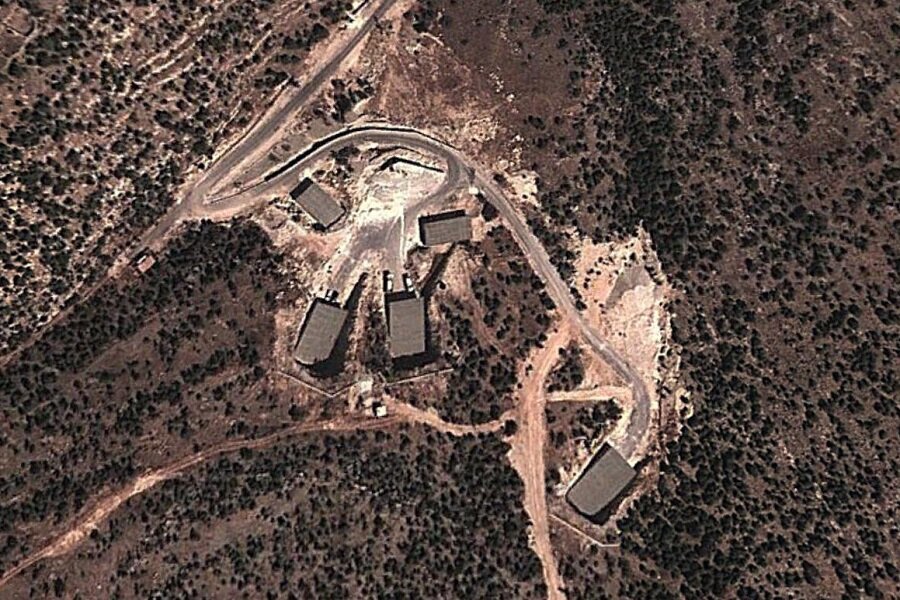Experts cast doubt on Spiegel claim of Syrian nuclear facility
Loading...
| Beirut, Lebanon
German news magazine Der Spiegel alleges that the government of Syrian President Bashar al-Assad is operating a secret nuclear facility close to the Lebanese border.
Der Spiegel claimed on Saturday, citing the opinion of unnamed "western intelligence agencies," that the Assad regime continues, with Iranian assistance, to seek a nuclear weapon more than seven years after Israel destroyed a covert Syrian nuclear reactor in the north-east of the country.
Nuclear weapons experts have voiced doubts about the claim. Iranian Foreign Minister Mohammed Zarif dismissed the report as "ridiculous."
The new alleged nuclear facility is located in a narrow valley, nine miles west of the town of Qusayr and only a few hundred yards north of the border with Lebanon, according to Der Spiegel.
The magazine claims that the underground site stores some 8,000 nuclear fuel rods and that either a new enrichment facility or nuclear reactor has been built there (the magazine isn't sure which). It also claims that intercepted radio communications between a member of Lebanon’s militant Shiite Hezbollah and a senior Syrian official contained a references to an “atomic factory” near Qusayr, using the codename “Zamzam."
There has been no official reaction to the report in Syria and Lebanon. Lebanon was preoccupied with a double suicide bomb attack Saturday night at a Tripoli café popular with supporters of Mr. Assad which left nine people dead. The suicide attack, the first in Lebanon since the end of June, was claimed by the Al Qaeda affiliate Jabhat al-Nusra.
In Israel, Defense Minister Moshe Yaalon told Channel 2 television that he could not “relate to a pinpoint” report but added that “there is no question” that the Assad regime had in the past built a nuclear reactor, a reference to the Al-Kibar facility that was destroyed by an Israeli air strike in 2007.
Der Spiegel’s report has drawn some initial skepticism from nuclear weapons experts.
“The story is perplexing… so far we do not see anything that is distinctively nuclear,” says David Albright, president of the Institute for Science and International Security which has conducted detailed satellite imagery analyses of suspected nuclear sites in the Middle East.
Although Der Spiegel describes the facility as “secret," Western intelligence agencies have been aware of its existence for several years. It has been visible on the Google Earth portal for three years and was described as a possible Scud ballistic missile storage facility in an August 2012 article in Jane’s Intelligence Review, a British monthly specializing in security affairs.
The site includes three 90 feet by 50 feet drive-in revetted bunkers built into the sides of the valley and two 65 feet by 40 feet bunkers, four of them arranged around a central asphalted pad. A track leads further up the hill to a second smaller facility which Der Spiegel suggests could be a ventilation shaft.
Other imagery analysts suspect it could be related to communications.
Google Earth images of the site lack sufficient resolution to confirm the identity of this feature. Der Spiegel adds that a “particularly suspicious detail” is the “deep well” located beside the road leading to the facility which it says is connected to Zeita lake, three miles to the east. Nuclear reactors require access to large amounts of water. Syria’s Al-Kibar nuclear reactor was located beside the Euphrates river. Der Spiegel did not clarify how the “deep well” (which is not discernible on Google Earth imagery) was connected to the lake, which lies on the other side of steep hills.
“Access to water can mean many things,” says Albright. “Piping indicating both water intake and discharge would be more interesting but we do not see that.”
It is also unclear why the Assad regime would build a nuclear facility that has such an obviously military aspect. The Al-Kibar reactor was an anonymous-looking building that could have been a factory related to agro-industrial use. Syria’s alleged former uranium conversion facility at Marj Sultan east of Damascus resembled a civilian industrial estate surrounded by orchards.
But there is no mistaking the Qusayr facility for a military base. The five bunkers are identical in configuration to those found in numerous Syrian military sites, including missile bases, north of Damascus.
Furthermore, its location beside Lebanon’s northern border places it within observation range of the Israeli aircraft which patrol Lebanon’s airspace on a near daily basis. Israel says the overflights, which are routinely condemned by Beirut and the United Nations, are necessary to observe the activities of its arch foe Hezbollah.
Israeli jets often fly over the Hermel region of northern Lebanon which lies adjacent to the valley containing the alleged nuclear facility. It seems unlikely that Israel would be unaware of the facility’s existence given its reconnaissance capabilities above Lebanon and the fact that the site is well known to Western intelligence agencies.
Perhaps, the most compelling evidence that casts doubt on Spiegel's claim is the fact the site continues to exist and has not met the same fate as its alleged predecessor in an Israeli air strike seven years ago in north east Syria





